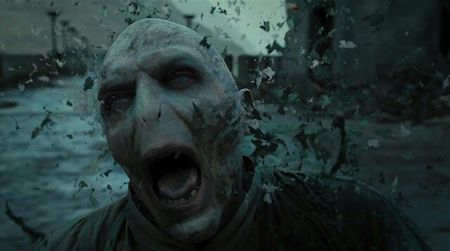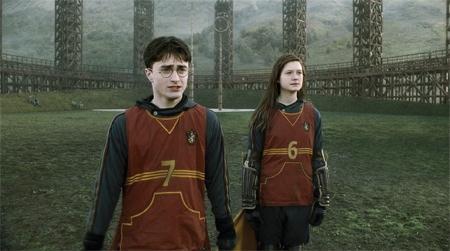Killing Lord Voldemort and Other Movie Adventures
It has been over five years since the Harry Potter film series ended, but there are still things to discover about the beloved movies. It’s always exciting to hear new stories from the making of the films. In fact, we just learned some new facts from behind the scenes!

Voldemort’s death in the books is simple and final and emphasizes the mortality that he spent most of his life trying to overcome. Film creators were searching for something to make the scene a visually striking moment of cinema, in addition to its importance in the story of Harry Potter.
As it turns out, adapting the pivotal moment of Voldemort’s death for film was much more complicated that we ever knew. We learned all about this quest to kill the Dark Lord when Moving Picture Company VFX supervisor Greg Butler talked to the Huffington Post about the challenge, which he undertook with fellow visual effects supervisor Tim Burke and animation supervisor Ferran Domenech.
The team knew they needed to visually tie together Voldemort’s death and the destruction of the Horcruxes, so they started their mission with Nagini’s death. As the final Horcrux, they wanted her death to have impact both as a moment of its own and as a link between the Horcrux destructions in previous films and Voldemort’s imminent death. Butler describes a clever technique they used to implant this connection in the viewer’s subconscious:
We took the actor’s face who played the young Tom Riddle and made that out of smoke. We took [Voldemort actor] Ralph Fiennes’ face, we made that out of smoke, and then we distorted a couple with both of those and made those out of smoke. So you have these smokey heads floating, all of which have some resemblance, some aspect of Voldemort performances.
Using this visual, they showed the piece of Voldemort’s soul housed in Nagini being destroyed along with the snake. They wanted to find a way to show the same finality in Voldemort’s demise. But how to portray this? Butler describes their process of trying to develop just the right design concept:
We invented new visual stuff, and we went through a whole bunch of concept art. There’s even some crazy stuff where he becomes this blackened, charcoal-y tree shape that’s growing and then that tree turns to ash and blows away in the wind … that’s how far down the road we went with some of these designs, trying to come up with something you really couldn’t miss.
Ultimately, they abandoned the idea of Voldemort transforming into vegetation, but they still wanted something unusual to happen. Butler, inspired by a death scene in Blade Runner, and decided to show a dual death: the death of Voldemort’s physical form as well as the perishing of his inner evil. Therefore, they channelled the images of dissipating darkness that had characterized the destruction of Horcruxes and combined it with their final design of Voldemort’s skin peeling off in thin layers and blowing away in the wind. Not only did it show Voldemort falling away into oblivion, but it also gave them the screen-filling shot that the team was looking for when they developed the tree idea.

In lighter news, we learned the surprisingly Muggle-ish meaning behind a detail in the Harry Potter films. Any observant viewer knows that Harry’s Quidditch number is seven. It’s easy enough to explain – a Quidditch team has seven players, so it’s a logical choice. Going deeper, there are seven Horcruxes, seven Potters, and seven Weasley children; seven is traditionally considered a magical or lucky number. However, costume designer Jany Temime told Bustle in a recent interview that she had something else in mind entirely when she selected the number on Harry’s Quidditch robes:
I gave [number seven] to Harry Potter, because David Beckham had just won at the time. I thought every single kid in England would get it. Now, they don’t know anymore. But at the time that it came out that Harry Potter was [number seven], it was a thing.
Tying Harry to the time the movies were made through a jersey number was clever and brings to mind Dean and Seamus debating the merits of soccer vs. Quidditch! The number seven commemorates not only Beckham’s #7 jersey from his time at Manchester United but also his charity work with 7: The David Beckham UNICEF Fund.
Do these revelations surprise you? Do you think they made the right decision regarding Voldemort’s death scene? Did you catch the David Beckham reference on Harry’s Quidditch robes?
Are you coming to MuggleNet Live! 2017: Nineteen Years Later? Check out what’s happening and get your tickets before they’re gone!

